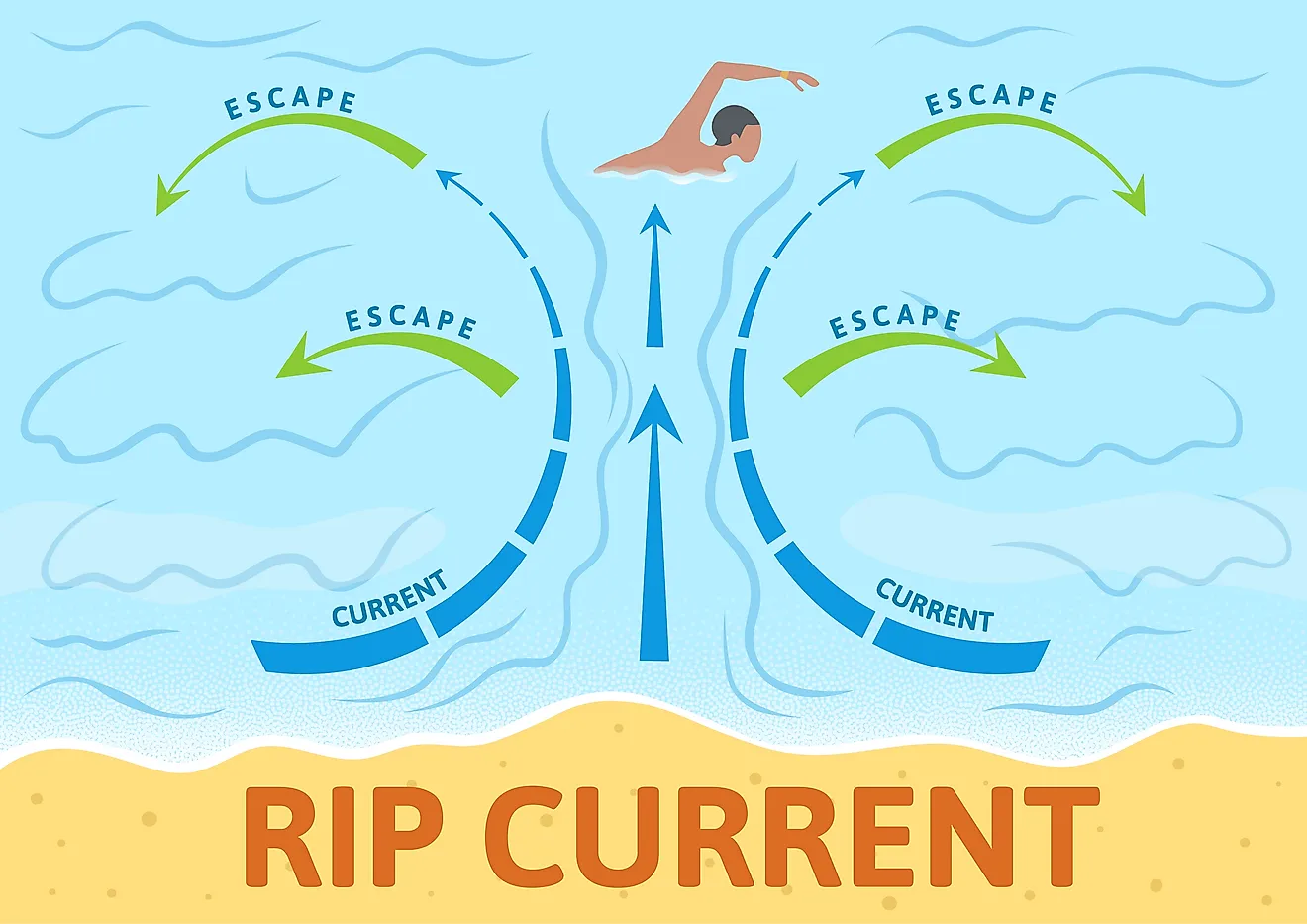What Causes A Rip Current?

What Is a Rip Current?
A rip current is a type of water current that can occur near shores with breaking waves. Rip currents are strong, narrow, and localized water currents that travel away from the beach. They cut through the line of breaking waves and are strong near the water's surface. Rip currents can be very dangerous, especially for individuals who do not understand them, since they may panic and exhaust themselves by attempting to swim against the water flow. Rip currents cause about 46 deaths per year in the United States (US) and are the leading cause of rescues by lifeguards at beaches. Many people mistake a rip current for an undertow, but neither of the two types of currents can pull and hold people under the water. Undertows are undercurrents that move offshore when a wave is traveling towards the beach.
Causes of Rip Currents
Rip currents are formed by breaking waves and wind, which pushes surface water to the shores and results in an increase in the level of water moving up the beach. This excess water has to travel back into the ocean through the course of least resistance. When the water flows back into the ocean becomes concentrated in one area, such as a deeper area caused by a break in a reef or sandbar, the water flows more freely, thus creating a rip current. The water that is pushed to the shore flows up the beach towards the outgoing rip as a feeder current. The excess water then flows back into the shore in a tight current that is referred to as the neck of the rip current. When the water pushed by the rip reaches the line of breaking waves, it is dispersed sideways and dissipates into the head of the rip current.
Occurrence of Rip Currents
A rip current is formed on a shelving shoreline where the underwater topography promotes outflow in a given area. They can form in the ocean, sea, and lakes with large waves. Determining the exact position where a rip current occurs can be difficult. Some occur in the same place, while others appear in different locations along the shore. The disappearance and reappearance of rip currents depends on various factors including the bottom topography of the beach. Rip currents can also occur in places with substantial longshore variability in wave breaking. This variability can be caused by various features including jetties, piers, and sandbars. They can also occur in areas where there is a small gap in the lower part of a sandbar or a reef.
A rip current can be quite narrow but can be faster, wider, and more common when the breaking wave is large. Some beaches are more likely to experience rip currents because of the local underwater topography. Many people believe that rip currents can pull swimmers under the surface of the water, which is not true. Rip currents are active near the surface of the water since the flow below the surface is slowed by friction. The surface of rip currents appears smooth, with no breaking wave, which can cause swimmers to mistakingly think that an area is safe for swimming.











